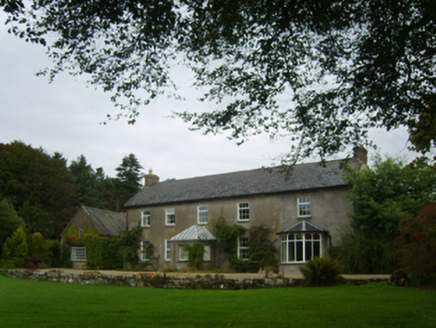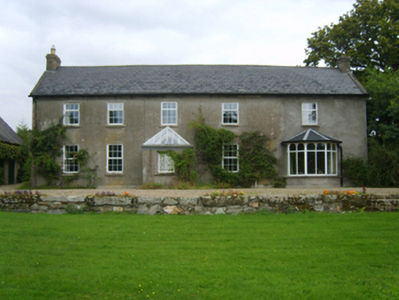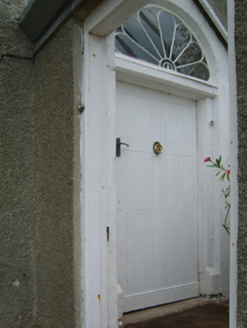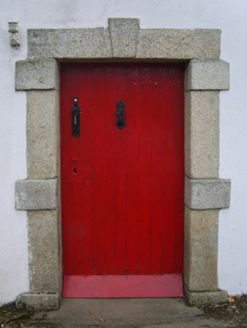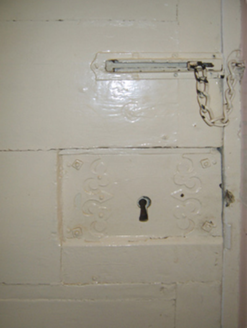Survey Data
Reg No
15704026
Rating
Regional
Categories of Special Interest
Architectural, Artistic, Historical, Social
Original Use
Farm house
In Use As
Farm house
Date
1700 - 1776
Coordinates
285567, 118712
Date Recorded
07/09/2007
Date Updated
--/--/--
Description
Detached five-bay two-storey farmhouse with dormer attic, extant 1776, on a T-shaped plan centred on single-bay single-storey projecting porch to ground floor. "Improved", pre-1902, producing present composition. Sold, 1912. Part reconstructed, 1992. Replacement pitched slate roof centred on pitched (gabled) slate roof (east) with clay ridge tiles, concrete or rendered coping to gables with rendered chimney stacks to apexes having corbelled stepped capping supporting ribbed terracotta pots, rooflights to rear (east) pitch, and uPVC rainwater goods on rendered stepped eaves retaining cast-iron downpipes. Part creeper- or ivy-covered fine roughcast wall to front (west) elevation; rendered surface finish (remainder). Round- or segmental-headed central door opening into farmhouse with concealed dressings framing timber panelled door having fanlight. Square-headed window openings with cut-granite sills, and concealed dressings framing replacement uPVC casement windows replacing six-over-six (ground floor) or three-over-six (first floor) timber sash windows. Set in landscaped grounds with monolithic piers to perimeter having shallow pyramidal capping supporting looped wrought iron double gates.
Appraisal
A farmhouse representing an integral component of the eighteenth-century domestic built heritage of south County Wexford with the architectural value of the composition suggested by such attributes as the rectilinear plan form centred on a restrained doorcase showing a simplified "peacock tail" fanlight, albeit one partly concealed behind a later porch; and the diminishing in scale of the openings on each floor producing a graduated visual impression. Having been well maintained, the elementary form and massing survive intact together with substantial quantities of the original fabric, both to the exterior and to the interior, including a door allegedly reinforced as a precaution against raids during the 1798 Insurrection: the introduction of replacement fittings to most of the openings, however, has not had a beneficial impact on the character or integrity of the composition. Furthermore, adjacent outbuildings (extant 1840) continue to contribute positively to the group and setting values of a self-contained ensemble having historic connections with the Dalton family including Edward Dalton (d. 1862), 'Gentleman late of Raheenduff County Wexford' (Calendars of Wills and Administrations 1862, 75); and John Dalton (d. 1885), 'Farmer late of Raheenduffe [sic] Foulksmills [sic] County Wexford' (Calendars of Wills and Administrations 1885, 185).
